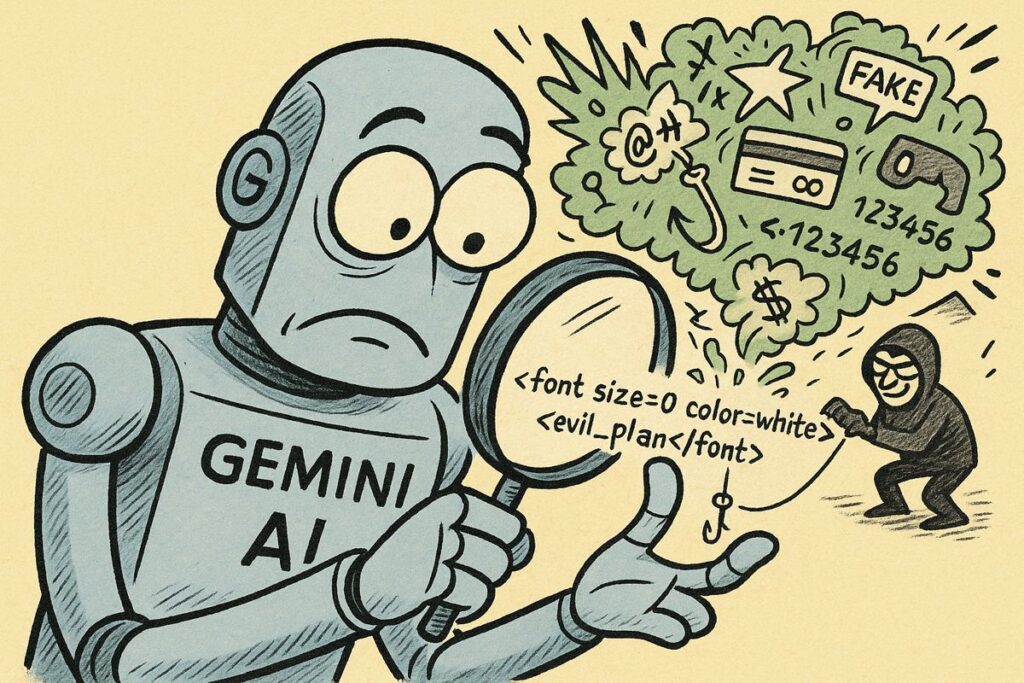Introduction
Recent cybersecurity research has uncovered a striking vulnerability in Google Gemini’s AI-powered Workspace tools: hackers are exploiting hidden HTML code to manipulate AI-generated summaries, turning trusted digital platforms into vectors for misinformation and phishing. This attack doesn’t rely on cutting-edge AI manipulation—instead, it uses decades-old web tricks to embed invisible instructions that only the AI sees. The situation is a stark reminder of how deceptive threats—both digital and biological—can operate invisibly, causing harm before they are even detected.
The Vulnerability: Hiding in Plain Sight
Cyber attackers are embedding instructions in emails, Google Docs, Slides, and Drive files, using simple HTML and CSS techniques like zero-size fonts and matching text color to background. For human users, the content appears normal; for AI systems like Gemini, which process all underlying content, these “invisible” prompts become part of the summary output. This can result in AI-generated recommendations to call fake support numbers, click on malicious websites, or take other risky actions—effectively turning Gemini’s summarization features into a sophisticated phishing tool.
The Parallels: Digital Deception and “Invisible Poisons”
Much like certain biological threats, these digital attacks work through hidden mechanisms. The concept of the “invisible poison” is well known in medicine—substances like alcohol and radiation can damage organs and tissues long before any symptoms appear. As noted in health literature: “For us, it’s an invisible poison. Just like we can’t see Wi-Fi, we can’t see radiation. Yet it damages organs, destroys tissues, and kills cells.” The same can be said of these new cyber threats: their effects are “hard to detect,” and the damage is already done by the time the user notices anything amiss.
Why This Matters: Trust, Awareness, and Critical Thinking
Both invisible poisons and hidden digital threats exploit a gap in user awareness. They rely on our tendency to trust what we see—or what we think we see. In the case of Gemini, users have come to trust AI-generated summaries as accurate and unbiased. In reality, these summaries can be manipulated, just as our perception of everyday substances can mask their long-term harm.
This underscores a crucial theme for the modern age: whether facing chemical, cultural, or technological risks, critical thinking and skepticism are essential. We cannot rely solely on automation or habit. As one expert notes: “The importance of critical thinking and not trusting automatic responses is emphasized in both contexts.”
The Broader Implications
- Digital Trust at Risk: Exploiting AI summarization tools undermines user trust across all digital platforms.
- Information Hygiene: Just as we must be cautious about what we consume, we must scrutinize the digital content we accept. Hidden threats operate through normal-appearing channels.
- Old Tricks, New Threats: The most dangerous attacks often aren’t the result of new technology, but repurposed methods exploiting new vulnerabilities.
What Can Be Done?
- Manual Verification: Users are advised to always verify critical information and not rely solely on AI-generated summaries, especially when financial or security actions are recommended.
- Security Enhancements: Google is deploying layered defenses, including prompt injection classifiers and enhanced filtering to catch suspicious activity, but the onus remains on users to stay vigilant.
- Awareness and Education: Understanding that both digital and biological threats can be invisible—and potentially deadly—is the first line of defense.
Conclusion
The manipulation of Google Gemini by hidden HTML code is more than a technical flaw; it’s a reminder of the universal principle that the most insidious threats are often those we cannot see. Just as invisible poisons like alcohol quietly damage our health, invisible digital exploits can undermine our trust and security. The solution is not panic, but awareness: a commitment to critical thinking and proactive verification in every aspect of our lives, digital and otherwise.



